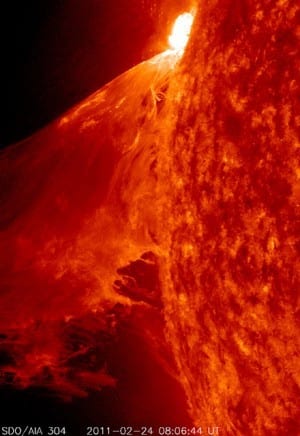
Three major solar flares light up the solar system in the span of a day
In just 24 hours, the sun gave scientists something to think about on Monday. Between 10 p.m. EDT on May 12 and 9 p.m. EDT on May 13, the sun released three significant solar flares. Three in 24 hours is a rare occurrence by its self, but that wasn’t the only thing that made these flares special.
All three flares were classified as X-class flares. These are the sun’s strongest flares. The first peaked at X1.7. The following two were X2.8 and X3.2, respectively. The last one is the strongest flare of 2013, and the third strongest of the sun’s current cycle which began Feb. 15, 2011.
The region also showed two smaller M-class flares during the 24 hours. These are medium sized flares. C-class are the smallest flares.
Now you’re probably wondering what a flare is. A solar flare is when the sun releases a massive amount of radiation. They’re usually sent out from a relatively small area on the sun’s surface. The Earth’s atmosphere blocks the harmful types of radiation, so humans have little to fear from solar flares. But a powerful enough flare directed at Earth could penetrate the atmosphere enough to mess with communication signals.
These three flares emanated from a part of the sun that is not currently facing Earth. Which is good because the flares were accompanied by coronal mass emissions. These emission are made of solar particles and are capable of penetrating the atmosphere, potentially harming electronics in orbit, the air and on the ground.
Flares of this magnitude are not unusual for where the sun is in its cycle. Having three in 24 hours is. And the sun is not likely to let up any time soon. Instead, it’s expected to reach its peak sometime in 2013.















